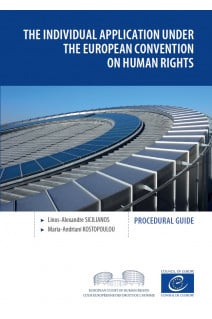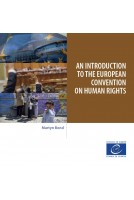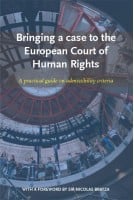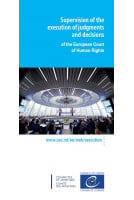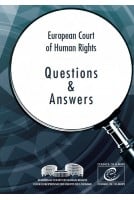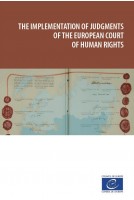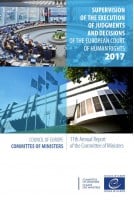ACRONYMS AND ABBREVIATIONS INTRODUCTION CHAPTER I ORGANS OF THE ECHR §1. European Court of Human Rights: the main organ of the ConventionA) Plenary Court
B) Sections: administrative units
C) Judicial formations
1. Single judges
2. Committees
3. Chambers
4. Grand Chamber
§2. Committee of Ministers: ensuring an effective system §3. The other organs of the Convention A) Parliamentary Assembly
B) Secretary General
C) Commissioner for Human Rights
CHAPTER II THE PROCEDURE BEFORE THE EUROPEAN COURT OF HUMAN RIGHTS §1. Sources of procedural rules A) The ECHR
B) Rules of Court
§2. Lodging applications A) Application form and languages of proceedings
B) Contents of individual applications
C) Representation of applicants
D) Requests for anonymity or confidentiality of documents
E) Grouped applications and multiple applicants
F) Correspondence with the Registry
§3. Registering the application §4. Facilitating access to the Court A) No court fees
B) Legal aid
§5. Admissibility criteria A) Criteria relating to procedure
1. Exhaustion of domestic remedies
2.The six-month (soon to be four-month) time-limit
3. Anonymous applications
4. Substantially the same matter
5. Abuse of the right of application
B) Criteria relating to the Court’s jurisdiction
1. Jurisdiction ratione materiae
2. Jurisdiction ratione personae
3. Jurisdiction ratione loci
4. Jurisdiction ratione temporis
C) Criteria relating to the merits
1. “Manifestly ill-founded” applications
2. No significant disadvantage
§6. Order of dealing with cases §7. Interim measures A) Legal basis
B) Scope
C) Requesting interim measures
D) Procedure
E) Decision
1. Decision to adjourn
2.Decision to grant interim measures
3. Rejection decision and outcome of the application
§8. Third party intervention A) States’ right to intervene
B) Leave to intervene
1. Procedural aspects
2. Third parties involved in the dispute
3. Third parties acting as amici curiae
C) The Human Rights Commissioner’s right to intervene
§9. Non-contentious dispute resolution A) Friendly settlements
1. Procedural aspects
2. The principle of confidentiality
3. Follow-up to friendly settlements
B) Unilateral declarations
1. Legal basis and physiognomy of the institution
2. Conditions for accepting a unilateral declaration
3. The Court’s assessment and its follow-up
§10. Examination of applications before the Court A) Examination of applications not communicated to the government
1. Examination by a single judge
2. Examination by a committee
3. Examination by a Chamber
B) Examination of applications communicated to the government
1. Communicating the application
2. Examination of applications by a committee
3. Examination of applications by a Chamber
4. More specifically: just satisfaction
5. Examination of applications by the Grand Chamber
6. Final judgments
CHAPTER III THE PROCEDURE BEFORE THE COMMITTEE OF MINISTERS §1. Supervision of the execution of Court judgments A) Extent of States’ obligation to comply with the judgments of the Court
B) Purpose of supervision by the Committee of Ministers
C) Supervision of the payment of just satisfaction
1. Beneficiary of just satisfaction
2. Payment deadline, default interest and complaints
3. Place of payment
4. Currency used
5. Attachment and taxation
D) Individual and general measures: Action plans and action reports
1. Action plans
2. Action reports
3. Structure of action plans and reports
E) Access to information and communication with the Committee of Ministers
F) Interim resolutions and final resolutions
G) Exceptional measures available to the Committee of Ministers
1. Referral to the Court for interpretation of a judgment
2. Infringement proceedings
§2. Supervision of the execution of the terms of friendly settlementsConclusions Selected bibliography
